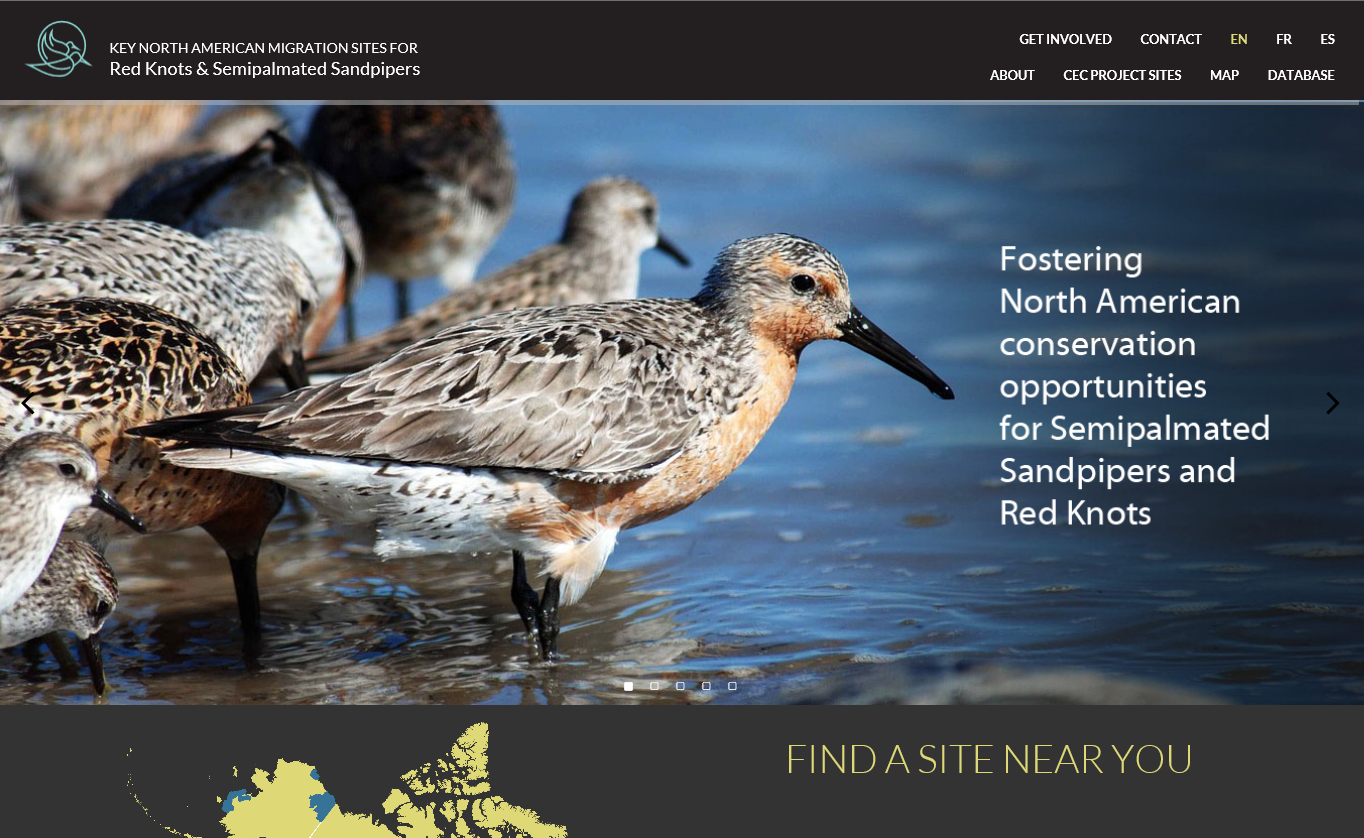Find a site near you: new website connects communities that care for shorebirds
Engage with the CEC’s new online resource and learn how you can help conserve at-risk migratory shorebirds along North America’s Pacific and Atlantic flyways
Montreal, 21 September 2017—The Commission for Environmental Cooperation (CEC) has launched an online resource to support the conservation of migratory shorebirds at key North American stopover sites. By providing detailed data, maps and outreach tools, this new website facilitates information-sharing between communities that steward important sites along the migratory routes of Arctic shorebirds.
Visit the website, Key Migration Sites for Semipalmated Sandpipers and Red Knots, to learn more about two migratory bird species that breed in the Arctic and stop to rest at a select number of sites in Canada, Mexico and the United States during their migration. These sites are important indicators of overall biodiversity health:
- Red Knots (Calidris canutus) can fly from the Arctic all the way to the southern tip of South America during their yearly migration. The rufa subspecies is listed as Threatened under the Endangered Species Act in the United States; rufa and roselaari subspecies are listed as Endangered and Threatened, respectively, under the Canadian Species at Risk Act; and the roselaari subspecies is listed as Threatened in Mexico.
- Semipalmated Sandpipers (Calidris pusilla) can fly up to 4,000 km (2,500 miles) non-stop over the ocean between stopover sites. They are identified in Canada, Mexico and the United States as a species of high conservation concern due to rapid population decline.
Here’s how you can use this new online resource:
- Search through our database to find detailed information about 88 North American stopover sites, including bird counts, migration seasons, known threats and more.
- Explore our interactive map to search for stopover sites by region, country and subspecies.
- Discover interesting facts and figures about each species, including habitat, feeding and migration information.
- Get inspired by the shorebird conservation and outreach actions at eight CEC-supported project sites featured on the website.
- Download free materials from our online outreach kit and access additional information on our resources page.
About the CEC project Arctic Migratory Birds Initiative (AMBI) – Americas Flyway Action Plan
In June 2015, Canada, Mexico and the United States approved a two-year CEC project to help implement the Americas Flyway Action Plan as part of the Arctic Council’s Arctic Migratory Bird Initiative. The goal of the CEC project was to improve conservation outcomes for at-risk shorebirds that breed in the Arctic. By partnering with the Western Hemisphere Shorebird Reserve Network, a recognized, community-based conservation effort, this project informed, engaged and connected communities in the three countries that share responsibility for the well-being of these shorebirds.
Building on the results of our 2015-2016 project, the three countries recently approved a new project, Conserving Shorebirds through Community Engagement, as part of its 2017-2018 cooperative work program.

About the CEC
The Commission for Environmental Cooperation (CEC) was established in 1994 by the governments of Canada, Mexico and the United States through the North American Agreement on Environmental Cooperation, a parallel environmental agreement to NAFTA. As of 2020, the CEC is recognized and maintained by the Environmental Cooperation Agreement, in parallel with the new Free Trade Agreement of North America. The CEC brings together a wide range of stakeholders, including the general public, Indigenous people, youth, nongovernmental organizations, academia, and the business sector, to seek solutions to protect North America’s shared environment while supporting sustainable development for the benefit of present and future generations
The CEC is governed and funded equally by the Government of Canada through Environment and Climate Change Canada, the Government of the United States of Mexico through the Secretaría de Medio Ambiente y Recursos Naturales, and the Government of the United States of America through the Environmental Protection Agency.